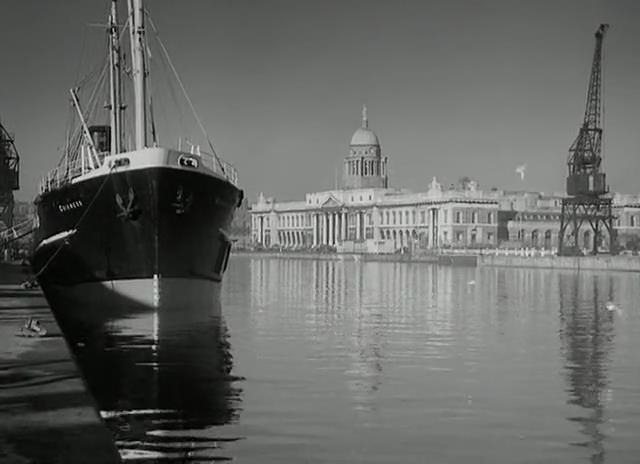Sunday Sinners
A superb little
musical with a plethora of comedy, fine singing, and some great dancing. The
subtle, complicated script is mostly built around Club Harlem, whose owner is
faced with mounting troubles from a crusading minister, a protection racket,
and a slippery wife (and co-owner).
The minister has
his own problems, Sister Malaprop doesn’t want
to see boys prancing around in their underwear. But,
she is told, the boys are doing exercises in the basement, and besides, those
are gym suits. “I don’t care if they’re Jim’s or
Mary’s,” she replies, and furthermore, “the church
ain’t no place for young’uns, they should
be in a house of corruption!”
The Quare
Fellow

“Which quare fellow do you mean? You mean the fellow that bate his
wife to death with a silvertopped cane, or the fellow that used a mate chopper
on his brother?”
A new Irish
warder learns the ropes. “It’s no Sunday school, Mr. Crimmin.”
And if that were
not enough, a fight over a doxy.
Dreifuss on location for great views of the country and
Dublin’s fair city.
As will be seen,
critics have had not one single iota of a glimmer of an inkling of any of this.
Bosley Crowther of the New
York Times, “the morbid interest of Irish writers in prison, hangmen
and death, as manifested in plays of Sean O’Casey and Lady Gregory.” Variety, “downbeat entertainment but honest”. Tim Lucas (Sight and
Sound), “if anything can be said of his
direction here it’s that it doesn’t stand in the way of his actors
or the play he rewrote.”
TV Guide, “not for
everyone, but certainly a good drama.” Hal Erickson (All Movie Guide), “inappropriately glum”. Halliwell’s Film Guide,
“watered-down”.
A masterpiece on
a fine grand theme, but in the critics’ wake let us have the man from the
BFI, “filmed at Ireland’s Ardmore Studios four years later, when its author
was still not yet 40. At 41, as famous for
misadventurous drinking as for adventurous writing, Behan was dead.”

Riot on Sunset Strip

“Another
jolly thrill-packed evening in Kiddieland.” Shades of the speakeasies at The Mailed Fist and
Pandora’s Box, hot rods, subculture meets class, “the right of
self-expression and recognition”, the works. “It’s
what’s happening.”
“Oh,
crazy.”
“Groovy,
huh doll?” The cop’s daughter from a
broken home lives with her drunken mother. “A movie star’s son with
plenty of bread, and no-one at home to crack down.”
“No
mother?”
“Lots of
‘em. His old
man’s been married six times.”

“Grownups—ya
can’t leave ‘em outta
ya sight for a minute.” The
self-policing of John Ford’s The
Grapes of Wrath. A sugar cube
“freak-out” as choreography (Harold Belfer),
just before Roger Corman’s The Trip. The sign points to “Identification
Room—Juvenile Division” as the watch officer heads out the door on
a call that turns out to be statutory rape. “Man,
what a hangup.”
Dreifuss is a student of the Dead End/East Side school. “Our sons,
our daughters,” a view shortly
espoused in Avildsen’s Joe and Bolognini’s Imputazione di omicidio per un studente.
Screenplay by
Orville H. Hampton, cinematography Paul C. Vogel, various bands.
|
They fill our minds with talk of hate (talk of hate), because they’re causing their own fate (their own fate). |
Paul Gaita (All Movie
Guide), “hopelessly dated and square... no
comprehension of or affinity for youth culture whatsoever... flat and
clichéd.”
